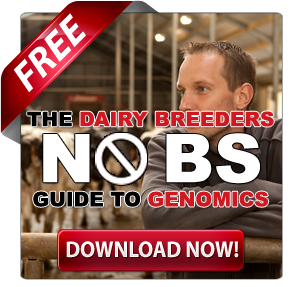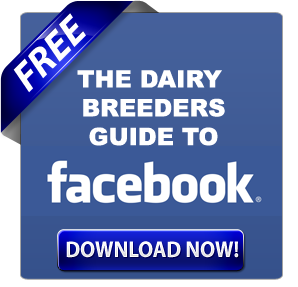How does U.S. milk production rise despite California’s setbacks? Can farmers maintain growth? Uncover key insights and trends.
Summary:
The USDA Milk Production report highlights unexpected growth as the dairy industry braces for unpredictable currents. U.S. milk output climbed by 0.2% year-over-year in October despite California’s avian flu challenge, which significantly dented production levels. Nationwide, producers adapted by leveraging strong market signals to expand strategically. While California saw a 3.8% decline, states like Idaho and Texas reported gains, underscoring the industry’s resilience amidst market challenges. The increase in cow numbers and improved yields have been pivotal, with a notable addition of 46,000 cows to herds in the last quarter. Meanwhile, dairy markets, particularly Class III milk futures, have experienced restrained shifts, with spot butter prices slightly dropping due to ample availability. As global trade dynamics shift, China’s milk equivalent imports significantly impact international transactions, making it a key player in the evolving dairy market landscape.
Key Takeaways:
- The U.S. milk production saw a modest increase of 0.2% in October 2024, driven by a rise in cow numbers and herd expansion.
- California faced a significant production decline of 3.8% due to the highly pathogenic avian flu strain H5N1 affecting yields and herd size.
- Despite challenges in California, other central dairy states like Texas, Idaho, New York, and Michigan experienced production gains.
- High milk prices encouraged producers to increase output, overcoming barriers to expansion with effective strategies.
- The dairy markets displayed caution as the industry navigated increased production amidst varying regional performance.
- China’s declining milk equivalent imports indicate a shift in global dairy demand, impacting market dynamics.
- Future projections suggest continued growth in U.S. milk production, contingent on California’s recovery and nationwide performance improvements.

In the face of daunting challenges, U.S. milk production has showcased remarkable resilience, defying expectations even as California—America’s dairy powerhouse—struggled. Recently, the USDA’s eagerly awaited milk production report for October revealed that national volumes managed a modest, yet significant, increase. This report marked a pivotal moment in the industry and invited a closer examination of the underlying dynamics fueling this unexpected growth. Despite regional hurdles, the national dairy herd has expanded, and yields have seen improvements, hinting at strategic adaptations by producers nationwide. By delving deeper into rising cow numbers, improved yields, and regional disparities, we can better understand how the nation’s dairy industry continues to thrive under pressure. It’s a testament to the adaptability and tenacity of those driving milk production forward.
California’s Crisis: A Ripple Effect Across the U.S. Dairy Sector
California’s struggles have sent shockwaves through the national dairy landscape, primarily driven by the adverse effects of the highly pathogenic avian flu strain H5N1. As the largest dairy-producing state in the U.S., California historically leads the charge in milk output. However, the relentless grip of H5N1 has severely impeded this powerhouse. A notable decline in cow numbers and slumping yields has culminated in a staggering 3.8% year-over-year decrease in milk production.
The impact of the avian flu resonates far beyond poultry, affecting broader agricultural operations. This has resulted in a tangible reduction of 4,000 cows in California this October alone. This statistic signals the grim reality facing producers. Moreover, yields in the Golden State have diminished by 3.6% compared to last year, adding another layer of complexity to this crisis.
California’s centrality to the U.S. dairy sector cannot be overstated. Any fluctuation in its production has a ripple effect, influencing national output and market dynamics. This decline occurs as the rest of the nation seeks stability and growth in milk production amid fluctuating prices and demand.
The broader implications are significant: As California grapples with these challenges, other states must intensify their efforts to balance the national scales. Yet the question looms: Can they sufficiently compensate for California’s downturn? This evolving narrative demands our attention, as the outcomes could reshape the competitive dynamics of the dairy industry across the United States.
Resilient Herds and Strategic Growth: The Unsung Heroes of U.S. Dairy’s Rebound
Amid California’s significant production decline, the U.S. dairy industry demonstrated resilience, largely thanks to several key growth factors. One major contributor to the national uptick in milk production is the increase in the dairy herd. After months of stagnation, dairy farmers across the country added approximately 46,000 cows to their herds in the last quarter, driving the national herd to levels not seen since early 2023. This strategic expansion has been pivotal in sustaining overall production levels despite regional setbacks.
Alongside the rise in cow numbers, improved yields per cow have also played a critical role. Nationally, yields rose modestly but meaningfully, with each cow contributing more milk than in previous months. This incremental gain in productivity has been vital in offsetting the volume deficits seen in regions like California.
States such as Texas, Idaho, and New York have exemplified how diversifying strategies can mitigate localized downturn impacts. Their efforts, particularly in Texas, have resulted in an 8.8% year-over-year increase in October volumes. This strategic growth, driven by efficient herd management and investment in technological advancements, offers a beacon of hope for the industry’s future. It shows that even in the face of challenges, the U.S. dairy industry can adapt and thrive.
These contributions underscore a strategic recalibration within the U.S. dairy industry that capitalizes on high milk prices and robust demand to drive growth. This adaptability has allowed dairy farmers to navigate and often thrive despite the substantial environmental and health crises impacting key production areas like California.
Steadying the Ship: Dairy Markets Navigate with Caution Amidst Production Gains
The milk production report has had a noticeable yet restrained influence on dairy markets, particularly concerning Class III milk futures. The market reaction was muted, reflecting a degree of anticipation as trends hinted at production stabilization. With 1,691 contracts traded, the figure was lower than expected, indicating some market participants had perhaps already priced in the increases in milk production.
The Class III market’s subdued reaction might signal a cautious approach from traders bracing for further data or adjustments in the forthcoming USDA updates. This caution is mirrored in spot prices, where stability is the current theme. Spot butter prices, which refer to the current market price for immediate butter delivery, fell slightly, indicating ample availability but also suggesting buyers are wary of pushing prices too low with the year-end in sight.
Looking at forward premiums, the present environment might lead to a gradual reduction. This potential trimming reflects confidence in the supply chain’s ability to meet demand without artificially inflating prices. The broader trends underline this sentiment, showing that while the production figures indicate growth, they align with gradual, rather than explosive, expectations.
Overall, the report fits within the broader market trends, suggesting a period of adjustment as the industry recalibrates in response to favorable production conditions outside of California and cautious market behavior. The implications for the coming months indicate that while optimism in supply remains, prudence in trading strategies will likely prevail.
China’s Shifting Demand: A Catalyst for Global Dairy Trade Evolution
As the global dairy market evolves, China remains a pivotal player, with its milk equivalent imports significantly impacting international trade dynamics. In October, these imports decreased by a remarkable 10.7% compared to the previous year. While this decline is at the lower end of anticipated figures, the consistent reduction over 15 consecutive months suggests a complex interplay between supply constraints and demand fluctuations within China.
This downward trend in Chinese imports has had reverberating effects on the global stage. With China’s demand dwindling, exporters worldwide are recalibrating their strategies, and the U.S. dairy sector is no exception. Reduced Chinese imports could build inventory in other regions, prompting competitive pricing strategies and strategic shifts in export destinations.
For U.S. dairy producers, these global shifts offer both challenges and opportunities. On the one hand, the reduced Chinese market might pressure American exporters to identify alternative markets or risk surplus. On the other hand, the potential stabilization or uptick in Chinese demand—evidenced by North Asia’s increased activity on the Global Dairy Trade (GDT) platform—could open doors for renewed partnerships and expanded exports.
Domestically, U.S. producers may need more flexible production strategies to align with these global dynamics. This could involve enhancing production efficiencies, diversifying product offerings, or investing in market intelligence to anticipate international demand trends better. As the world’s dairy landscape shifts, U.S. strategy will inevitably hinge on the ability to adapt and anticipate changes in global market flows.
The Bottom Line
The October milk production report underscores a narrative of resilience and strategic innovation within the U.S. dairy industry. Despite formidable challenges, especially in California, producers nationwide have demonstrated adaptability. They have managed modest national output growth by focusing on herd expansion and leveraging high prices to increase production. This semblance of progress hints at their capacity to rise above adversities like the avian flu, which has impacted Californian yields.
However, this presents the question: How will the U.S. dairy sector navigate future disruptions while capitalizing on emerging opportunities? As we mull over this query, it becomes crucial for professionals in the field to assess their operations critically. What adjustments are necessary to ensure survival and prosperity in this ever-evolving landscape? Understanding these dynamics and adapting strategies will determine resilience in imminent market fluctuations.
Learn more:
- Will Favorable Margins Propel U.S. Milk Production to New Heights?
- Is 2024 Shaping Up a Disappointing Year for Dairy Exports and Milk Yields?
- Unveiling the USDA Milk Report: Find Out Which States are Leading and Lagging!
 Join the Revolution!
Join the Revolution!
Bullvine Daily is your essential e-zine for staying ahead in the dairy industry. With over 30,000 subscribers, we bring you the week’s top news, helping you manage tasks efficiently. Stay informed about milk production, tech adoption, and more, so you can concentrate on your dairy operations.







 Join the Revolution!
Join the Revolution!




